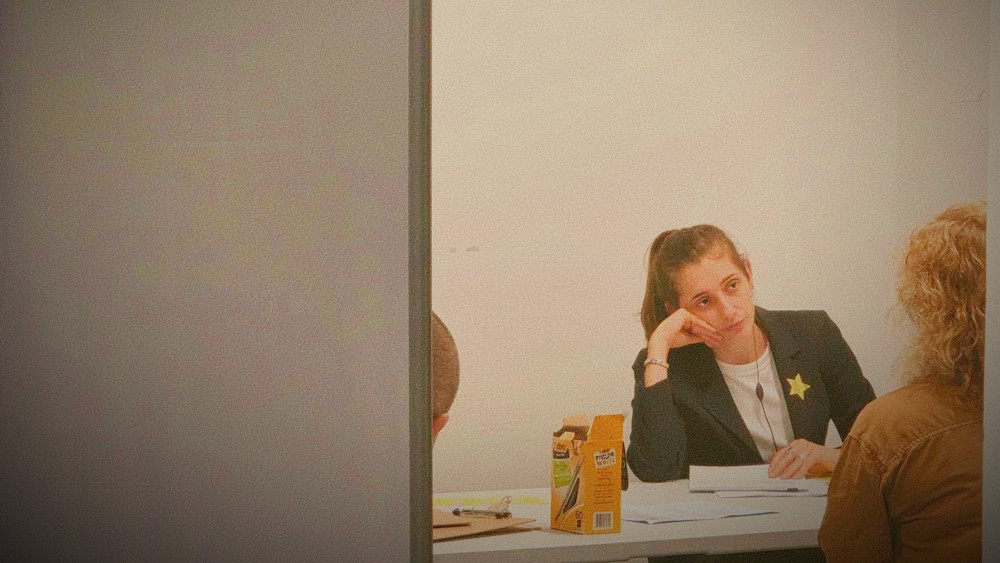This piece, “The Importance of Centering Neurodivergent and Mad Writers” by Cortland Nesley, was originally published on HowlRound Theatre Commons on March 16, 2021.
There is a particular feeling I get when I’m about to consume media centered around autism. One might think that, as an Autistic person, those feelings would be joy and excitement. The reality is different. I feel an anxious pit in my stomach. I wonder, Is it going to be the same tired tropes? Is it going to be another super-genius with no emotions? Are they going to paint us as dangerous, violent, or out of control?
I distinctly remember reading The Curious Incident of the Dog in the Night-Time as a theatre student. I was excited that a play this popular focused on an Autistic narrative. Unfortunately, as I read it, it dawned on me that it was a story I had already seen a million times. It was the story of an Autistic character reduced to a series of behavioral tropes; it was Rain Man, The Big Bang Theory, and Sherlock all over again. It was the same old trick: a savant who makes up for their lack of social grace with superhuman-level intellect. As I read about the play’s flashing lights and loud noises—theatrical choices intended to simulate sensory overload that would really just induce it in an Autistic audience—it quickly became clear that this play was not made by or for people like me.

Being an Autistic dramaturg who runs a writer’s group for Neurodivergent and Mad people, I spend lots of time thinking about how stories portray Neurodivergent and Mad people. These days, I feel confident dissecting narratives that perpetuate sanism—prejudiced beliefs about those who become pathologized. But when I was an impressionable kid, I internalized these narratives. I thought I had to be a logic machine whose efficiencies left no room for vulnerabilities. I thought I lacked worth until I made my “quirks” useful to others.
There are times when sanism is bluntly wielded in narratives to elicit a sensationalized and voyeuristic curiosity in an audience. Many people fear those labeled as “schizophrenic” or “bipolar” because they perpetually consume narratives where violent killers are motivated by nothing more than “insanity” (even though Mad people are statistically far more likely to be victims rather than perpetrators of violence). But sanism exists beyond these overt monsterifications of Mad people. Sanism manifests when the same tired tropes get recycled over and over again. When people only see one kind of Autistic story, it limits their imaginations to who Autistic people can be; it diminishes Autistic existence to such a narrow box that we Autistic people become inhuman. Autistic experiences are as varied and unique as their neurotypical counterparts. Narratives that deny this fact deny the humanity of those whose lives they commodify.
Autistic experiences are as varied and unique as their neurotypical counterparts. Narratives that deny this fact deny the humanity of those whose lives they commodify.
The tropes don’t exist coincidentally, they were not created in a vacuum. They exist because neurotypical people interact with neurodivergence and madness through a paradigm of pathologization. This paradigm suggests there is a “normal” neurology that begets “normal” behavior, and deviation from those behaviors constitutes a biological problem. Through this medicalized understanding of Neurodivergent and Mad existence, psychiatrists have the authority to dictate what experiences are deemed legitimate or illegitimate, healthy or unhealthy, sane or insane. In other words, a paradigm of pathologization suggests that Neurodivergent and Mad people are unqualified to speak to their own experience of the world. If we say or do something that threatens a neurotypical notion of normality, we are labeled “crazy” and are quickly brushed aside (and often incarcerated into psychiatric institutions).
When a writer wants to create a play about an experience they don’t have, often their first step is to research what that experience is like. However, when it comes to Neurodivergent and Mad people, writers forgo researching lived experience in favor of researching the “condition” from a clinical perspective. This poses a problem when you consider that clinical perspectives on Neurodivergent and Mad people often cause them the most harm. Writers are too often interested in the thoughts of medical experts rather than the plethora of literature written by psychiatric survivor groups, Neurodivergent self-advocates, and those who have lived experiences of being a Mad subject.
“Nothing about us without us” is a phrase popularized by the disability rights movement in the wake of self-advocates fighting for the Americans with Disabilities Act in the 1990s. The phrase speaks to the need for Disabled people to be in charge of what affects them. It invokes a community-based approach where an expert-based one previously failed. “Nothing about us without us” teaches that the best people to be in charge of Disabled interests are Disabled people. Similarly, Neurodivergent and Mad writers should be leading the charge in shaping Neurodivergent and Mad narratives.
Neurodivergent and Mad writers should be leading the charge in shaping Neurodivergent and Mad narratives.
When Neurodivergent and Mad groups take command of telling their own stories, it leads to more daring and impactful work. In 1974, the Proud Paranoids, a San Francisco–based Mad theatre group, presented a play at the first-ever meeting of the Network Against Psychiatric Assault, cementing Mad performance as a pillar in the psychiatric survivors movement. Gallery Gachet in Vancouver has been a haven for Mad art since 1993 and continues to be centrally involved in the organization of Mad pride festivals. Workman Arts in Toronto highlights Mad storytellers in their Rendezvous with Madness Festival. The Epic Players in New York City strives to center Neurodivergent voices in a professional context, as does the Spectrum Theatre Ensemble in Providence. The list goes on and on. There is no reason why these theatremakers should not be the first to come to mind when talking about Neudoviergent and Mad storytelling.
Perhaps what is most powerful about these examples is that they are community focused, leveraging the power of shared knowledge. In this sense, these art-makers are antithetical to psychiatric authorities that bolster and produce harmful sanist narratives. Psychiatric authorities build a one-directional relationship where lines of served and server are unmalleable. These groups move away from a model of service towards one of community. Theatre too often frames its interactions with Neurodivergent and Mad communities as an act of service. How many programs use theatre to give Autistic people “better social skills”? How few aim to actually cultivate the work of Autistic artists?
Neurodivergent and Mad people are not only capable but are uniquely qualified to control their own destinies. Neurodivergent and Mad art—like all other art—needs attention, support, and community to grow. But these needs can only be met if people make the conscious effort to not default to a clinical understanding of neurodivergence and madness. The centering of Neurodivergent and Mad folks can only happen if people make the active choice to believe in them more than the experts who police them. The more we focus on works based on lived experiences, the less sanism will permeate our storytelling.










